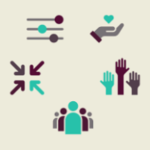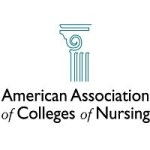Taking a break from who is hiring and who was hired, we rounded up some reading on the state of the healthcare workforce. Like many things in our lives for the past two years the pandemic has taken a toll on it. The healthcare workforce might be on the top of the list of disruption. With 18% of healthcare workers having left their jobs and another 12% being laid off, what are the solutions for healthcare as a whole? You can’t open a paper, magazine, or watch news and not hear about the crisis that has evolved. Here are some insights and reports.
To Listen
We start with two episodes from Healthcare NOW Radio, the first from Tell Me Where IT Hurts radio show and the second from the Healthcare Upside/Down podcast.
Host Dr. Anders interviews Janae Sharp, founder of the Sharp Index. Sharp shares her very personal family tragedy from physician burnout, which was the impetus behind her creating the Sharp Index a non-profit dedicated to increasing awareness of and reducing physician suicide and burnout through support and data science. Both Anders and Sharp discuss stories and contributing factors to burnout, including the EHR industry, the challenges that lay ahead and what can be done to make meaningful progress in both areas. This may be the most impactful and moving episode yet.
On this episode, De-escalating Distress and Burnout with Pennie Sempell, Founder of StressPal and Jen Barna MD, Founder & CEO of DocWorking with host Dr. Nick.
How do we mitigate these pressures and turn the tide of burnout that has been impacting healthcare workers for many years? The costs of solutions pay for themselves when you consider the amount of people who are considering leaving or have left. If you are looking for an ROI for investing in a resilience program look no further than the savings accrued from not only keeping staff in their roles but making them happier and as a direct consequence more productive.
Your better pill to swallow is to create a preventative resilience program to defuse the widespread distress and burnout but goes one step further and seeks to create more resilience before those problems even arise.
In the News
AHCA/NCAL Partnering with Local and National Organizations to Offer Refugees Meaningful Jobs and Assistance
The American Health Care Association and National Center for Assisted Living (AHCA/NCAL) (@ahcancal), which represents more than 14,000 nursing homes and long term care facilities across the country that provide care to approximately five million people each year, is working with long term care communities across the country to offer thousands of jobs for refugees – including those intending to come to the United States from Ukraine. Participating facilities will also offer refugees job training, relocation assistance, as well as support their integration into local communities.
National Nursing Workforce Survey Calls for Change as Non-Negotiable
A lack of action to better support our nation’s nurses amid a global pandemic could exacerbate the current staffing crisis, according to new research published by Wolters Kluwer (@Wolters_Kluwer) in partnership with UKG. “Nursing’s Wake-up Call: Change is Now Non-Negotiable” assesses current and future states of nursing labor models, offering a snapshot of how nurse staffing and care delivery models have evolved to address the profound challenges brought on by COVID-19 and an intensifying labor shortage. The survey of more than 300 nurse leaders in the United States was conducted in late 2021 and sheds light on opportunities for change across care settings to correct course and ensure the best care for patients.
AAMC Report Confirms Growing Physician Shortage
According to data published by the AAMC (Association of American Medical Colleges) (@AAMCtoday), the United States could see an estimated shortage of between 54,100 and 139,000 physicians, including shortfalls in both primary and specialty care, by 2033.
To Read
How an MSN Can Help Combat Nurse Burnout – By Ameritech in Nurse.com – Job-related burnout is real — just ask a nurse. Amidst an industry-wide nursing shortage, healthcare professionals are tasked with providing quality care while navigating understaffed workloads during a global pandemic. Although it’s not classified as a medical condition, burnout is the state of mental, physical, and emotional exhaustion caused by sustained work-related stressors.
Resources
 Staffing Resource Center
Staffing Resource Center
MGMA
Twitter: @MGMA
With physician burnout on the rise and engagement on the decline, it can feel like there’s nothing you can do to combat the staffing shortage impacting the healthcare industry. Check out their list of best resources to help you restore your staffing levels and make it through the twilight of this pandemic. You can do this, and we’re here to help.
 2022 Healthcare Workforce Rescue Package
2022 Healthcare Workforce Rescue Package
All In WellBeing First for Healthcare
Twitter: @AllIn4WellBeing
Two years into a global pandemic, healthcare team members are in crisis. Leaders are bombarded with competing messages about how to support them and address workforce shortages. A group of experts in collaboration with the National Academy of Medicine identified the top five actions leaders should take to support team members now. These evidence-based actions can be initiated within 3 months and build a foundation for a long-term system well-being strategy.

